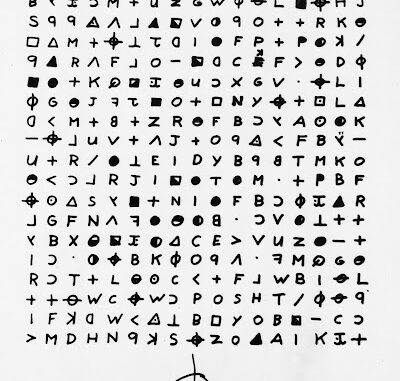
On Oct. 6, a group of over 40 former law enforcement investigators, journalists and military personnel known as the Case Breakers claimed to have discovered the identity of the infamous Zodiac Killer.
The Zodiac terrorized Northern California in the 1960s and sent cryptic, encoded messages to the police describing the murders.
Prior to this recent breakthrough, the FBI had suspected Arthur Leigh Allen, known pedophile, to be the notorious murderer.
There was never enough solid proof to put him on trial, and by 1992 he had died from natural causes, leaving the investigation at a stalemate.
The group has now identified the serial murderer as Gary Francis Poste, who had passed away in 2018.
They were able to link the original Zodiac killings to another unsolved murder that happened in 1966, the death of Cheri Jo Bates, whose body was found in an alley way in Riverside, California.
In the letters sent to the police between 1969 and 1974, the Zodiac claimed to have murdered 37 people, however only five of those incidents have been directly linked to the same killer.
If the Case Breakers are correct, Bates would have been the Zodiacs sixth confirmed murder.
The Zodiac had a very methodical tactic in hurting his victims, stalking them in broad daylight and then waiting until they were alone to either stab them or shoot them with a pistol.
Most of the time, he was wearing a black cloak that covered his face with his famous symbol painted on the front.
Other incriminating evidence includes a scar found on Poste’s forehead via photos from his darkroom that match an old police sketch for the Zodiac and a missing part of one of the anagrams sent by the Zodiac to the police that only reveals the message through plugging in the letters of Poste’s full name.
Mike Renault Mageau and Bryan Calvin Hartnell, two of the six Zodiac victims, both survived the attacks and have attested to the scar on their attackers forehead. Their accounts were crucial in cracking the case.
FBI agents have yet to validate Poste as the Zodiac. Working together with the San Francisco and Riverside Police Department, they have been unable to speak to potential subjects, leaving the case still open.
The Riverside authorities have stated publicly that they’ve ruled out any connections between the Bates murder and the Zodiac Killings, which puts a hole into the Case Breaker’s argument.
Apparently, the group had found strands of hair in Cheri Jo Bates’ hand that they said if tested, would show Poste’s DNA and be the exact damning evidence they need to convict him.
The test was never run and Riverside Police insist that they never received this information from the group, which contradicts their previous statement.
Dedicated solely to solving murder-mysteries, the Case Breakers have had a decent amount of success in the past 10 years in picking up FBI slack by going backthrough old evidence and exploring new lines of questioning on multiple different cases.
In 2018, the team was able to solve the DB Cooper mystery, which involved an unknown skyjacker parachuting out of a commercial aircraft with $200,000 in cash.
The case had been open since 1971, and ended by revealing it was the acclaimed Vietnam pilot, Robert W. Rackstraw, who had committed the crime.
According to the Case Breakers website, “The FBI Uniform Crime Report states there are more than 250,000 unsolved murders across the USA, a number that grows by 6,000 a year […] Only 5% of America’s busy police departments can afford a staff of cold case investigators.”
The group boasts of their connections to current federal and state agents, giving them access to government resources that inevitably helped them solve the case.
Anna Gjika, sociology professor at SUNY New Paltz, makes a good point about the difference between the Case Breakers and currently employed FBI agents. Gjika explains how exactly the volunteer-based group was able to have more success in the case.
“I would examine the fact that they’re all ex-cops. There’s an interesting tension between what they can do on the job, the type of resources they have access to and the time they can spend on investigating something long-term,” says Gjika. “Versus when they are not on the job and can do this more freely with less bureaucratic pressure.”
Even without the backing of current FBI agents, this is the farthest that any group has come in solving the Zodiac case since Arthur Leigh Allen died, leaving scholars and true-crime fanatics sure that Poste is the man the public has been searching 54 years for.
